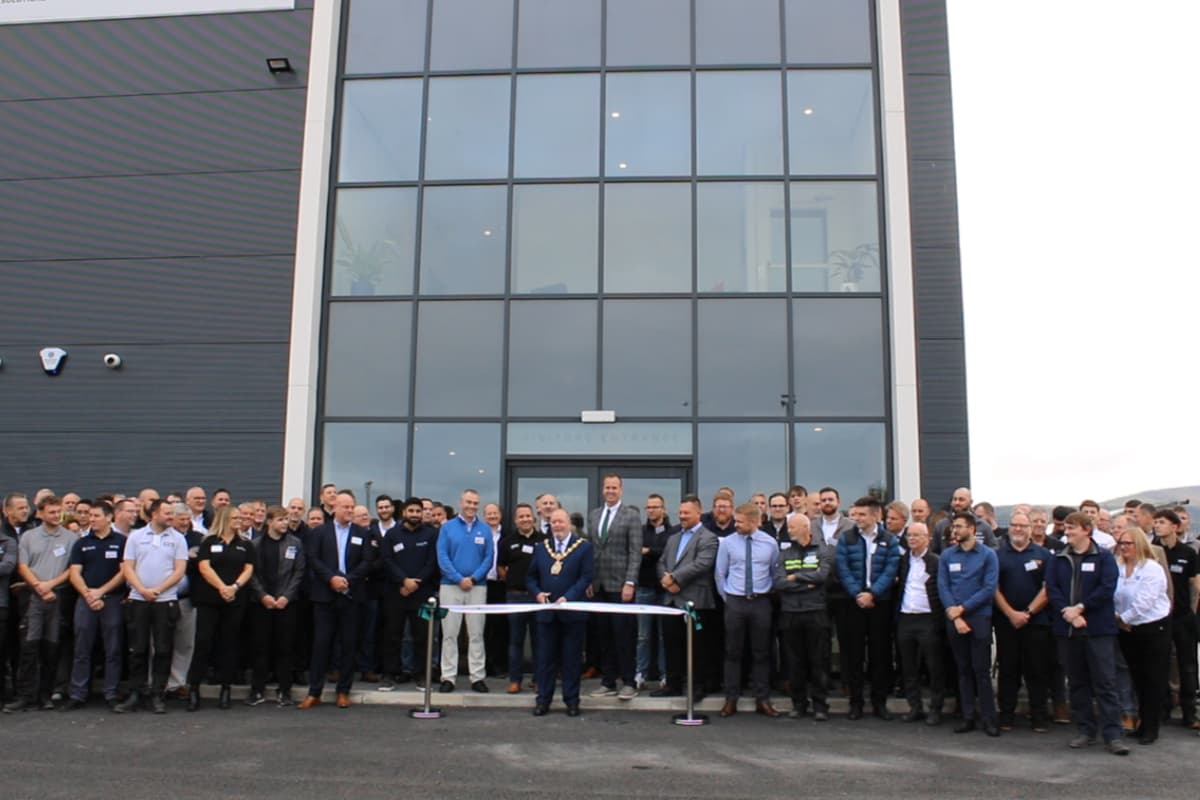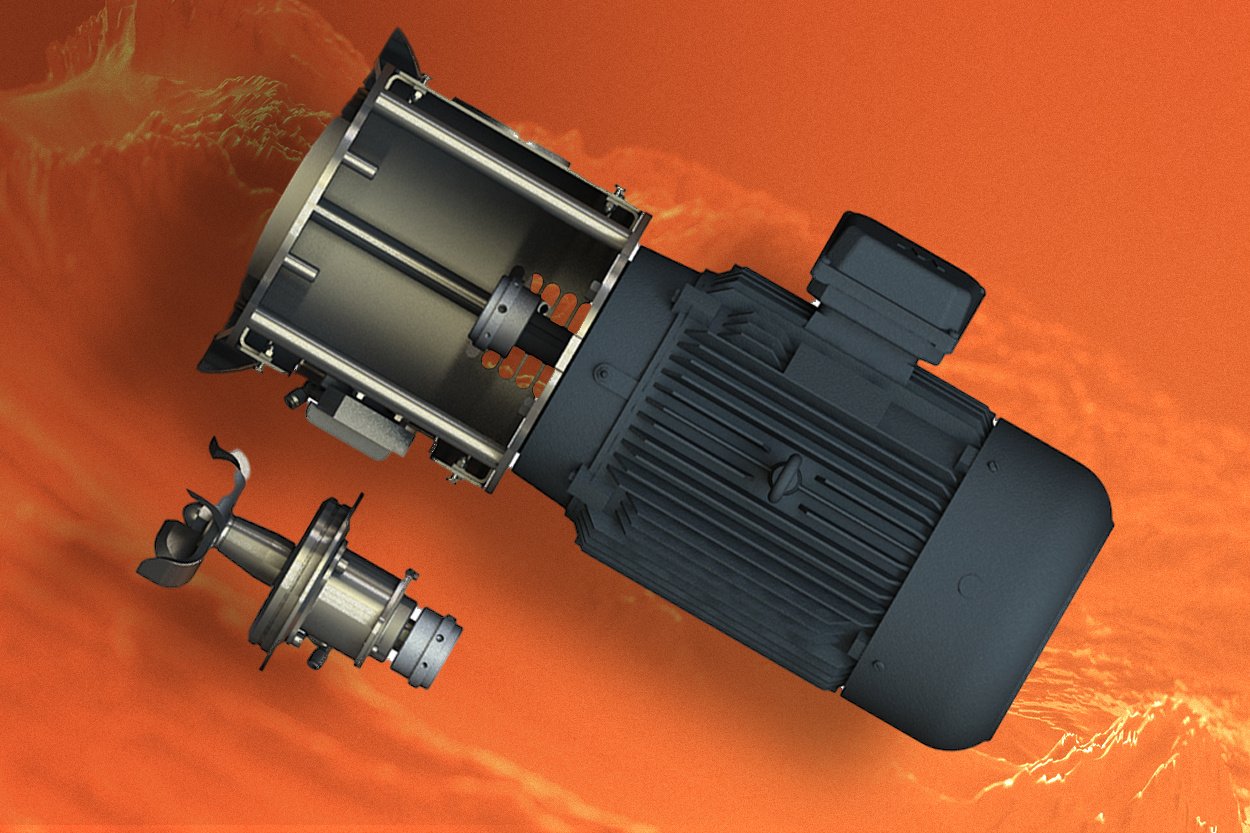The Key Technical Features and Benefits of Agitator Shafts
A horizontal agitator inside a mixer is a device used to put materials into motion by lifting and scooping or scrubbing the particles against each other. They can come in many sizes and varieties, depending on the task at hand. In general, agitators usually consist of a shaft and various configurations-paddles, ribbons and/or blades.
We often get questions from our customers about the use of agitator shafts and what works best for their application, so we performed an analysis of the features and benefits of agitator shafts to help guide your decision.
Feature: Shaft Diameter
Benefit: The agitator shaft transfers the rotational force produced by the drive assembly to the paddles or ribbons. Assuming like materials and torque requirements, smaller diameter shafts have higher stress concentrations than larger diameter shafts. Stress = Force/Cross sectional area of material where Force = Torque/Radius of the shaft. The main shaft should be designed to keep stress levels below the fatigue limit of the shaft material. Smaller diameter shafts are more likely to break due to fatigue failure than larger diameter shafts.
Feature: Static Deflection
Benefit: Static shaft deflection occurs due to the weight of the shaft, arms, blades, ribbons and hardware associated with the mixer. The shaft acts as a continuously loaded, simply supported, beam. Maximum deflection occurs about midway between the bearing supports. Shaft Deflection = (W»L3 )/( E»I»76.8) where E is the agitator shaft moment of inertia. To decrease deflection the shaft's cross-sectional moment of inertia needs to be increased. The moment of inertia of a solid 4I5/V shaft is more than 2 times that of a 4'/2" I.D. 5" O.D. schedule 80 pipe. Excessive shaft deflection will promote metal fatigue and accelerate seal wear.
Feature: Dynamic Deflection
Benefit: Dynamic shaft deflection occurs when the mixer is operating. In general, the force exerted by the down-sweep side of the agitator is greater than that of the up-sweep. Unlike static deflection which bends the shaft downward, dynamic deflection forces the axis of the shaft upwards towards the upsweep side of the mixer. The exact angle of deflection is dependent on variables such as paddle or ribbon design, material flow characteristics and product loading. Excessive shaft deflection, due to dynamic loading, will increase the clearances between the agitator and the trough on the down-sweep side of the mixer. Solid shaft designs will have less deflection than hollow shafts of similar diameter, promoting better mixing action.
Feature: Reduced Stress Risers
Benefit: Industrial mixers are a capital investment intended for decades of productive service. Even though horizontal blenders operate at relatively low speeds between 25 to 45 rpm's, over several years they can become susceptible to metal fatigue. For example, a mixer running for 2 shifts per day for 20 years will rotate approximately 175 million times. To avoid metal fatigue, and breakage in the main shaft, stress risers should be minimized. For bolted arm agitators, keyways must have radius comers. With welded agitator assemblies, drilling and pinning the arms to the main shaft prior to welding should be avoided.
Feature: One-Piece Shaft
Benefit: As described above, the agitator shaft of a mixer is subjected to several rotational and bending stresses. Within the industry today, there are mixer companies promoting stub shaft assemblies... for “easy agitator removal when required.” This feature allows the manufacturer of these mixers to build the agitator assembly completely outside of the mixer. Stub shaft assemblies rely on threaded fasteners, which are much smaller in the cross-sectional area than the main shaft, to transfer the energy created by the mixer drive assembly. One-piece, solid core, agitator shaft material should be used to reduce stress and minimize agitator deflection. If removal of the agitator is a concern, mixers are available with bolted/gasket end plate designs.
Feature: Shaft Straightness
Benefit: Welded agitator assemblies are used in applications where cleaning the mixer is a concern. All mating surfaces have welded fillets which are ground and polished to a specified finish. During fabrication, the heat created by welding and grinding these surfaces will warp the agitator shaft. Many times, the deformation is not noticeable to the naked eye. As a final step in the fabrication process, the shaft should be re-straightened. Excessive warping, run-out > .005", will accelerate wear of seals and bearings, creating higher long-term maintenance costs.
Feature: Blade or Ribbon Clearance
Benefit: Independent studies have proven that clearances between the agitator blades or ribbons and the trough can significantly impact mixing performance. Larger gaps produce higher coefficients of variation and longer mixing times. For most applications the gap between the mixer's agitator and trough should be .020" or less. (Note: Some applications require larger gaps to prevent degradation of the product being mixed). To verify accurate agitator clearances, documented quality control tests are to be conducted to measure residual material clean-out.
We urge you to contact one of our experts for more information and a full consultation. Subscribe to our blog to continue to get updates from us.



